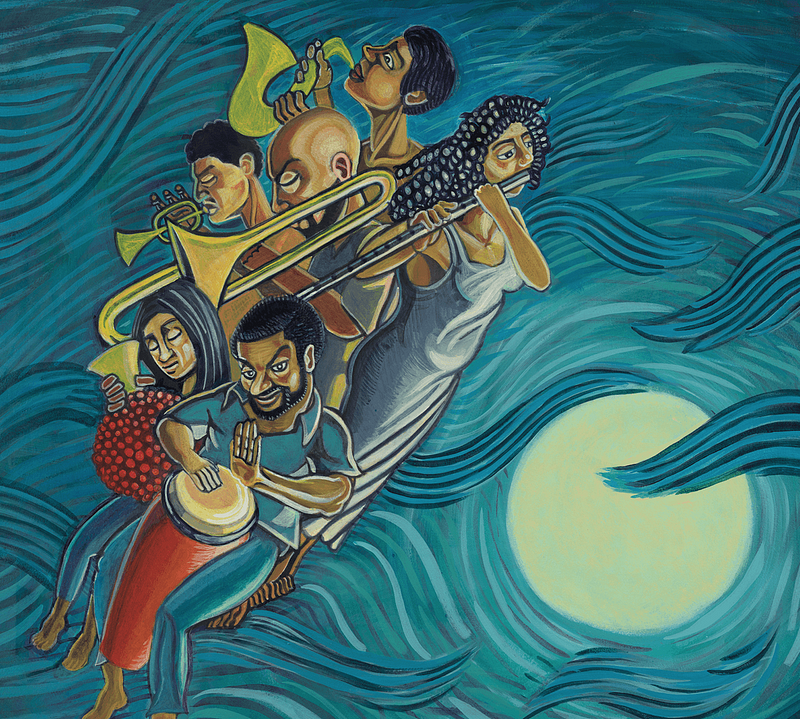
On Friday, Nov. 15 at 1:30 PM, an event titled “The Nuyorican Experience: A Panel on Diversity and Inclusion with the Bronx Conexión Latinx Jazz Big Band” was held in the Red Pit. The three members of the Bronx Conexión Latinx Jazz Big Band present — Cascadu, Chembo Corniel, and Victor Rendón — discussed their professional and personal experiences with music. In the conversation, the musicians focused on how music can connect people in various ways.
Victor Rendón, percussionist and band leader, has played with many notable Latin-jazz musicians, published the book
The Art of Playing with Timbales
, and contributed to several magazines.
Percussionist Chembo Corniel has established a record label, produced music for multiple albums, been nominated for a Grammy, and studied at Havana’s prestigious Escuela Nacional de Arte.
Cascadu is versatile as both a vocalist and percussionist in jazz, Latin, and Afro-Carribean, among other genres, and has produced a CD.
During the panel, the moderator took the time to ask the musicians several questions regarding their musical influences and journey and the role they play within different communities. Each of the musicians is familiar with many different styles of music: rock, jazz, Carribean, Indian, you name it. So when asked about their influences growing up and how they entered the music world, it was not surprising that each musician had a lot to say about their path to living a life of music.
Growing up with Puerto Rican parents, Corniel said he was exposed to his own culture’s sound at a young age. Outside of the home, however, on the streets of the Bronx, he heard the sounds of rock, jazz, and Motown, where eventually he said he found his love for music. Corniel added that musicians of marginalized groups tend to show more respect for different communities and genres because he and his colleagues take the time to learn the actual style of the music. Within these diverse sounds, Corniel says he found a way to take different approaches to an instrument based on genre and used the influences of his childhood experiences to learn the variety of ways one could play a singular instrument.
Rendón said he had a similar experience growing up, though his childhood was in Texas. He discovered some music through his family, but said he gained most of his knowledge at a young age thanks to his high school band teacher, who saw his talent and helped him grow as a musician. As Rendón progressed through high school, his teacher exposed him to jazz and Latino music.
The first Latino band he heard was Santana, which Rendón described as finding something that he “could identify with” because he connected with the language and culture of the song. Today, Rendón said he loves to create experiences similar to his by giving back to the music community and exposing others to the powers of different sounds.
Cascadu grew up in Trinidad surrounded by a “very musical society.” From a young age, Cascadu said he participated in his culture’s music by becoming a serious dancer. As a child, he said his life revolved around Trinidadian culture, which meant he loved music, dance, and eventually the drum. After a long journey of discovering the wonders of the drum, Cascadu eventually began to study music under a teacher in Buffalo who he says taught him that music was about communication. From listening to different genres, Cascadu also discovered that knowing more languages is a great asset to a musician. Now, he feels a personal responsibility to pass those lessons on to others.
Although the three musicians came from diverse cultural backgrounds and developed their connection with music in different ways, they emphasized the commonalities that have united them and given them the ability to create something together.
Cascadu, Corniel, and Rendón made it clear in their discussion that music can connect people. Whether one grows up listening to Puerto Rican music or Jimi Hendrix, they said, there is almost always something people can relate to in music.

















